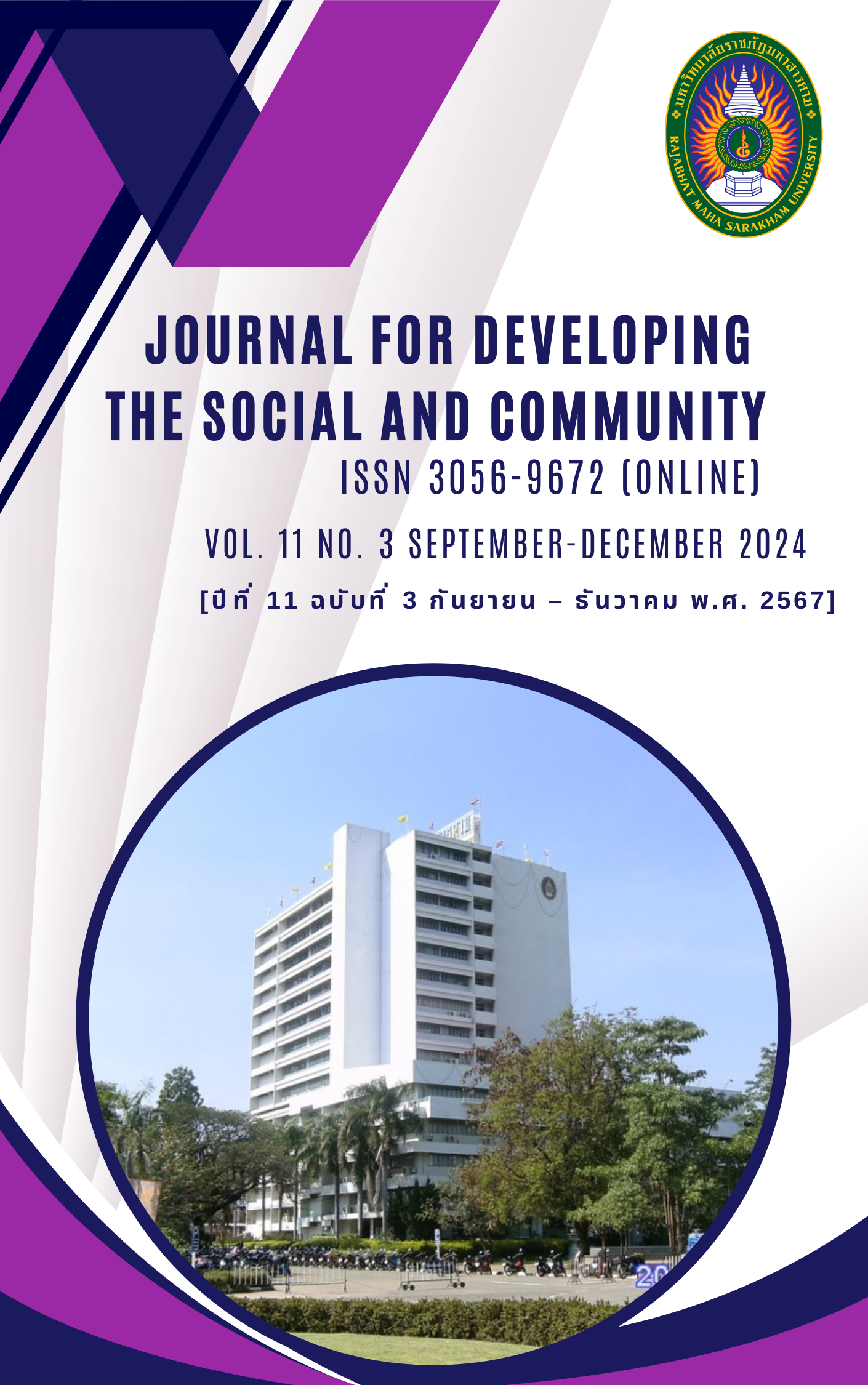The Differences of Classifiers between Sukhothai Inscriptions and Current Usage
Keywords:
Differences of words, Sukhothai inscriptions, classifiersAbstract
The purpose of this qualitative research project explored the different usage of classifiers between those that appeared in Sukhothai inscriptions and those used today. The sources of classifiers were collected from deciphered texts of the 52 Sukhothai inscriptions in the “Corpus of Thai Inscriptions, Instalment Part 8, Sukhothai Inscriptions” by the Fine Arts Department, the “Royal Institute Dictionary, 2554 BE,” and the “Classifiers: The Royal Institute Edition, 2551 BE.” by recording the data in a data collection table developed by the researchers. The results of the study found that the classifiers used in the Sukhothai inscriptions were a total of 78 words and showed 22 classifiers in the Sukhothai inscriptions differed from those used in the present day and can be divided into six categories: 1) five words of classifier indicating type; 2) four words of classifier indicating category; 3) two words of classifier indicating shape; 4) nine words of classifier indicating number and units of measurement; 5) one word of classifier indicating state; and 6) one word of repetitive noun classifier. The study concluded that the usage of classifiers in Sukhothai inscriptions differs from the usage in the present day in two aspects: 1) narrower meanings and 2) there is no usage in the current time, including replacement by other emerging classifiers. These differences reflect the different ways in which people in different eras have viewed the world around them.
References
Bandhumedha, B. (1971). Characteristics of the Thai language. Bangkok: Thammasat University Press.
Bandhumedha, N. (2015). Noun Classifiers. Journal of Humanities and Social Sciences, SRU, 7(1), 1-23.
Chaimano, B. (2017). A Comparison of Classifiers in 4Thai Dialects. Lampang Rajabhat University Journal, 6 (2), 73-90.
Classifiers: The Royal Institute. (2008). Bangkok: Royal Institute.
Deepadung, S. (1997). Extension in the usage of the Thai classifier /tue /In Arthurs. Abramson (ad.), Southeast Asian linguistic studies in hornour of Vichin Panupong, Chulalongkorn University Press.
Ittaratana, C. (1975). A study of Thai words and idiomatic expressions in the Sukhothai period. Master’s thesis: Chulalongkorn University.
Jaturongkachoke, K. (1995). Semantics of the Thai classifier system (Doctoral desertation) Arizona state University, United States.
Khanitthanan, W. (1976). A Hypothesis on Noun Classifier /Ɂan/. PASAA, 6 (1), 261- 266.
Lakoff, G. (1987). Women, Fire, and Dangerous Things: What Categories Reveal about the Mind. Chicago and London: The University of Chicago Press.
Meesri, W. & Wongwattana, U. (2020). Grammatical Functions and Semantic Aspects of “Ɂan” In Sukhothai Period. Humanities and Social Sciences Nakhonsawan Rajabhat University Academic Journal, 6(2), 156-179.
Naksakul, K. (1978). language Use. 2nd ed. Bangkok: Kled Thai Publishing House.
Palakornkul, A. (1970). Some observation on variation and change in the use of classifier in Thai. PASAA. 6(1), 186-197.
Placzek, J.A. (1978). Classifiers in standard Thai : a study of semantic relations between headwords and classifiers. M.A. thesis, University of British Columbia.
Royal Institute Dictionary, 2554 BE. (2013). Bangkok: Nanmee Books Publishing.
Singnoi, U. (2008). Noun classifier construction in Thai: A case study in Construction Grammar. Manusaya: Journal of Humanities. 11(1), 76-90.
Theebutra, S. (1992). Ngern Podduang. Bangkok: Chuan Printing House.
Thonglor, K. (1987). Principles of the Thai language. 7th ed. Bangkok: Bamrungsan Publishing House.
Upakitsilpasarn, Phraya. (1990). Principles of the Thai language. Bangkok: Thaiwattanapanich Printing House.
Wongpukdie, B. (1984). A comparative study of classifiers in the Sukhothai period, the Ayutthaya period and the present time. Master’s thesis: Chulalongkorn University.
Downloads
Published
How to Cite
Issue
Section
License
Copyright (c) 2024 Journal for Developing the Social and Community

This work is licensed under a Creative Commons Attribution-NonCommercial-NoDerivatives 4.0 International License.
Articles that are published are copyrighted by the authors of the articles







